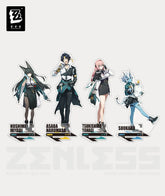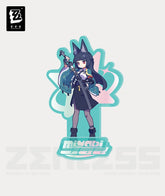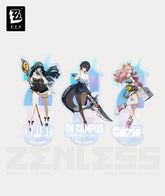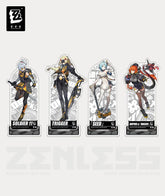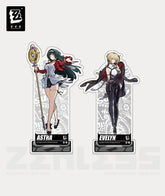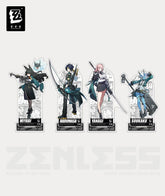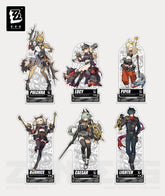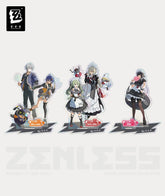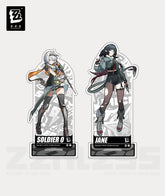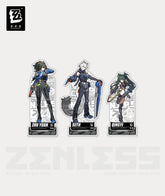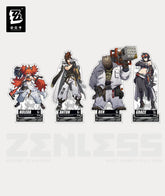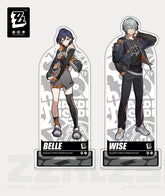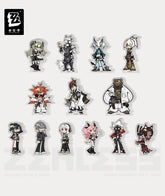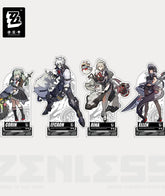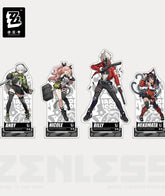Zenless Zone Zero Hugo: Dance in "The Miserable"
The great French writer Victor Hugo once said: "Il faut être mangeant ou mangé. Je mange. Mieux vaut être la dent que l'herbe."(One must be eating or being eaten. I choose to eat. Better to be the tooth than the grass.) In Zenless Zone Zero, Hugo Vlad of the Mockingbird Faction embodies this philosophy - refusing to be silently devoured by the world's rules, he becomes the sharpest fang tearing through darkness to reveal fragments of truth.
How many pulls have you saved for Hugo Vlad? Today, let's explore the unique charm of this master thief who maintains frenemy dynamics with Lycaon, defies the Public Security Bureau, and stands as the Mockingbird Faction's icon!
1. Zenless Zone Zero Hugo's "Visually Explicit" Costume Design
The most direct embodiment of Hugo's handsomeness lies in his costume design. Among Zenless Zone Zero's male characters, Hugo's attire stands out as the most "formal" - tailored to his upper-class heist persona. The suit, tie, and trousers immediately project elegance and extravagance. The skin-tight fabric perfectly contours his physique brimming with raw sexuality - who could resist the visual feast of Hugo's combat movements?

Yet traditional suits alone would become cliched. Beneath this elegance lurks a madcap phantom thief. Following HoYoverse's signature "asymmetry" principle, his coat is intentionally worn half-draped, with the other side billowing dynamically. The flowing ribbons extending from his back amplify this effect - when wind surges during combat, they become visual metaphors for agility and ferocity. Though I can't help chuckling at the coat's inner diamond patterns... they oddly resemble modern sofa upholstery.
Hugo's outfit brims with intricate details:
- A Mockingbird emblem adorns his right chest
- All buttons, chest straps, and briefcase decorations feature gold/silver dual-tone circular ornaments mirroring his heterochromatic eyes, engraved with sun and moon motifs. These create striking accents against his dark-toned attire.

Behind the scenes, Hugo revealed his signature tossed "coin" is actually chocolate - the same brand real-world Proxies recognize. This makes us wonder: Could those metallic ornaments secretly store emergency chocolate rations for mid-heist snacking?
Hugo's design also features numerous thorn patterns similar to Vivian's. As previously discussed in Vivian's costume analysis, thorns - naturally associated with "pain" and "torment" - metaphorically represent arduous journeys.

Now, let's examine Hugo's overall color scheme: deep navy blue with silver accents and golden hair. At first glance, it seems ordinary - until we consider Lycaon. Human retinas perceive red, blue, and green, while canine vision only detects blue and yellow. This means most characters appear partially desaturated (gray) to Lycaon. Yet Hugo's entire color palette remains vividly perceptible in Lycaon's eyes. Even Hugo's heterochromatic red eye (symbolizing impurity and hybridity) is filtered into Lycaon's visual spectrum as the same golden hue.

2. The Cultural Connotations in Zenless Zone Zero Hugo's Design
First, a mention of Hugo Vlad's visual prototype: the simplest association is "vampire." The "Vlad" in Hugo's full name is heavily tied to vampire lore, as seen in works like Aria the Scarlet Ammo and Nocturne: Midnight Concerto, where it denotes vampiric identities. However, I believe Hugo's connection to this archetype is purely superficial.
His core essence, much like his aristocratic appearance, is tied to literary symbolism. Given that his name is "Hugo," how could there be no link to the real-world literary giant Victor Hugo? Victor Hugo, a towering Romantic writer in French literature, is best known for "The Hunchback of Notre-Dame" and "Les Misérables". Delving into these works' themes, we can subtly uncover connections to Hugo's character foundations in Zenless Zone Zero.
Hugo's childhood experiences likely parallel Quasimodo, the protagonist of The Hunchback of Notre-Dame. Tragically fated, Quasimodo was born with one eye, a hunchback, a limp, and deafness by age 14, plunging his soul into endless darkness and driving him to bitterness and madness. The scorn and mockery from others filled him with hostility. He obeyed Archbishop Claude, his adoptive father, only to discover the latter's venomous cruelty. It was not until meeting the heroine Esmeralda that his kindness and noble qualities were reignited.

Hugo, as an illegitimate child who suffered humiliation, shares similarities in having his sister as the pillar of his will - resembling a more handsome version of the ugly Quasimodo. The connection between another work, Les Misérables, and Hugo is even more direct. The protagonist Jean Valjean, a thief who encountered a benevolent bishop illuminating his life, learned skills under the bishop's guidance and eventually became a merchant. Later, Valjean rescued a girl named Cosette from a cruel couple and raised her while on the run. This clearly parallels the relationship between Hugo and Vivian.
In later literary studies of Cosette, interpretations exhibit the following characteristics: she is a lark that cannot sing, a lucky darling favored by angels, an obedient lily accepting her fate, innocent and pure as a dove yet courageous in pursuing love. Such descriptions undoubtedly align more closely with Vivian, yet also imbue her with an active undertone of reshaping destiny.

Lycaon, from the perspective of order, disagrees with Hugo's views and pursues him. In Les Misérables, there is similarly a police officer named Javert who hunts Jean Valjean. Javert upholds the law and remains absolutely loyal to order, yet is moved by Valjean's actions through repeated encounters. The novel takes a more radical approach: Javert gradually realizes Valjean defies his ingrained criminal archetype, leading to the collapse of his ideological framework. Hugo meticulously depicts Javert's inner torment and confusion. His suicide aligns entirely with the logic of hardliners of his era-his mind couldn't adapt to differing ideologies, and his inability to reconcile duty with humanity ultimately drives him to drown himself. Meanwhile, our Lycaon and Hugo also reach reconciliation by the river.

3. The "Flowers of Evil" in Hugo Vlad's heart
Hugo's character embodies more than just "Hugo." Combining Old Jack and Lycaon's dialogues, his core design reminds me of The Flowers of Evil by Baudelaire, a poet contemporary with Victor Hugo. Old Jack once said: "Even in the abyss, a beautiful flower can bloom-but its roots draw nourishment from evil, not good; from hatred, not love." The Flowers of Evil is Baudelaire's exploration of duality in morality: evil possesses both corrupting malevolence and a perverse beauty. It corrodes humanity yet inspires rebellion against complacency and injustice. Thus, Baudelaire both despises and glorifies evil, fears and yearns for it. He dwells within evil yet resists being consumed by it. If he is called a "morbid flower" or "evil blossom," it reflects the twisted environment that bred him.

Baudelaire, rooted in Christianity's doctrine of original sin, believed "all that is beautiful and noble is man-made. Virtue is an artificial construct; thus, true goodness must be mined from evil through relentless effort." To pluck the "flower of evil" is to unearth hope from darkness and extract moral lessons from corruption. This philosophy undeniably mirrors Hugo's characterization, revealing the allure of his metaphorical "flower." It exemplifies the brilliance of Zenless Zone Zero's character design, where Hugo's literary depth shines. By recontextualizing classic works with modern hues, the game breathes vivid humanity into his persona.
By the way, don't forget Hugo's catchphrase: "I shall return/I'll be back, like an avalanche." derived from Soviet poet Boris' "Nightmare." The original line alludes to the tide of revolution and rebirth through destruction. Seeing this line, I'd long known Hugo's death was staged-no need for panic.

Recognizing Hugo's rich literary essence deepens appreciation for his narrative portrayal. In his three-act battle against his inner demons, one might expect clichéd tropes like "conquer darkness, embrace tomorrow." Yet Hugo reveals reconciliation: he chooses to accept the shadowed self born of despair, painfully yet lucidly realizing only he can redeem himself. He doesn't discard past darkness or flaws to become a "perfected" hero, but resolves to walk onward with imperfections and his "Flower of Evil."
Hugo's surface persona, much like the name of his Fourth Mindscape "Dramatic Theory," involves playing various roles in daily life. Whenever he interacts with others, he acts according to a premeditated script to guide and control their perceptions of him. Through these performances, he upholds his ideals and achieves his goals. These countless masks make it impossible for others to redeem him-yet he resolutely saves himself. As stated in his final Mindscape:
He walked willingly toward the endless abyss, letting the thorns on the ground tear at his wounds. Where the blood spread, broken dignity and stubbornness began to sprout from the wounds. He picked up the blood-soaked thorns to crown himself.
"There's only ever been one person who can kill me or save me... And that is me."
After this analysis, I wonder if you've grown to admire Mr. Hugo even more? I believe his essence, like his appearance, is both unassuming and magnificent, captivating every Proxy. That concludes our breakdown of Hugo's character design. Stay tuned for future articles about Hugo, other characters, and Zenless Zone Zero merchandise!
Zenless Zone Zero Official Stand
- $38.90
- $38.90
- Unit price
- / per
- From $14.90
- From $14.90
- Unit price
- / per
- From $14.90
- From $14.90
- Unit price
- / per
- $38.90
- $38.90
- Unit price
- / per
- $38.90
- $38.90
- Unit price
- / per
- $29.90
- $29.90
- Unit price
- / per
- $38.90
- $38.90
- Unit price
- / per
- $38.90
- $38.90
- Unit price
- / per
- $38.90
- $38.90
- Unit price
- / per
- $38.90
- $38.90
- Unit price
- / per
- $38.90
- $38.90
- Unit price
- / per
- From $39.90
- From $39.90
- Unit price
- / per
- $24.90
$38.90- $24.90
- Unit price
- / per
- $24.90
$38.90- $24.90
- Unit price
- / per
- $24.90
$38.90- $24.90
- Unit price
- / per
- $24.90
$38.90- $24.90
- Unit price
- / per
- $14.90
- $14.90
- Unit price
- / per
- $24.90
$38.90- $24.90
- Unit price
- / per
- $24.90
$38.90- $24.90
- Unit price
- / per












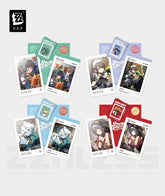

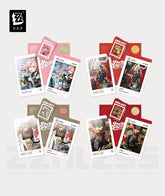

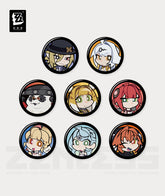

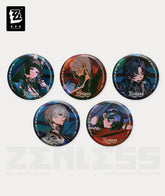

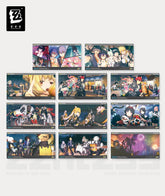

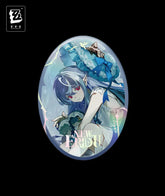

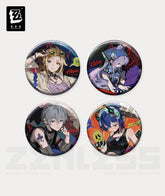

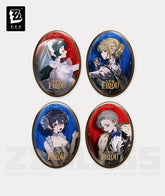

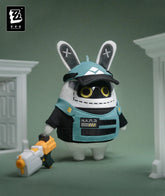

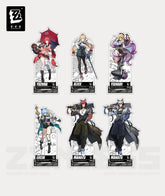

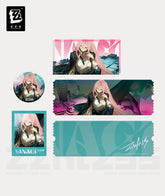



![[Official Merchandise] Zenless Zone Zero Yunkui Summit Character Acrylic Stand](http://141store.com/cdn/shop/files/ZZZ-Yunkui-Summit-Character-Acrylic-Stand_165x.jpg?v=1751788144)
![[Official Merchandise] Zenless Zone Zero Yunkui Summit Character Acrylic Stand](http://141store.com/cdn/shop/files/Ju-fufu-stand_165x.jpg?v=1751788144)
